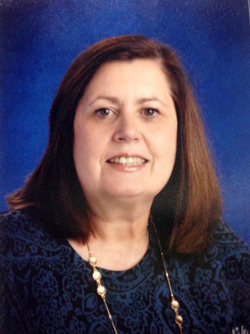2018 School Spending Survey Report
Designing a Library, via Listserv
A school librarian assembles a "must-have" library design wish list with crowdsourced recommendations.
 Kathleen Grupe (pictured), librarian at the Academy at West Birdville Elementary School in Haltom City, TX, will move to a brand new library in the fall of 2016. She queried the national librarian listserv LM NET to ask for help compiling a “must have” list for a new facility. “Can you share with me things you already have that you can't do without, or something you really wish you had…?” she wrote. “This is my opportunity to get the best library for our students that I possibly can.”
Kathleen Grupe (pictured), librarian at the Academy at West Birdville Elementary School in Haltom City, TX, will move to a brand new library in the fall of 2016. She queried the national librarian listserv LM NET to ask for help compiling a “must have” list for a new facility. “Can you share with me things you already have that you can't do without, or something you really wish you had…?” she wrote. “This is my opportunity to get the best library for our students that I possibly can.” Read feature article:
"How to Build a School Library from Scratch"
Includes: Connect quickly to grants, free materials, and volunteers online
Five questions for prospective volunteers
- An oversize dictionary on a pedestal or low-bookcase. It’s a large, physical reminder that you can always look up a word, whenever you need one.
- Three to four book carts from a good vendor like Demco—the kind with ball bearings so they roll smoothly.
- Electronic label maker (attaches to your computer with a USB) for making individual barcodes and spine labels and to label bookcases.
- A smart board or data projector for instruction.
- A projector mounted to the ceiling. Make sure to get enough lumens!
- A glass showcase to display student/faculty accomplishments.
- Movable bookcases.
- Bookcases lower than four feet and bookcases along the walls, so you have a clear line of sight: you can see students no matter where they go in the library.
- A smaller circulation desk, or maybe even a movable circulation desk, so you can supervise easily.
- Lightweight tables and chairs in order to rearrange furniture quickly in different formations for events like author visits, group study, classes, etc.
- Heavyweight tables and chairs that are sturdy and will last a long time.
- Computer carrels with wiring and electrical outlets.
- Computer carrels with no wiring so students can have time to focus on reading only.
- Electrical outlets that aren’t behind bookcases.
- Storage rooms!
- Window seats.
- Multi-use room for meetings, conferences, workshops, tutoring sessions, and social activities.
- A workroom with map drawers.
- Cabinets for laptops behind the circulation desk (if you are checking out laptops) with multiple outlets.
- Hardware for art installations or plexi-glass where you can insert and remove artwork.
- A back room with a sink (to wash hands before/after shelving books).
- Big windows. Natural light.
- Don’t situate your new library in a basement, if you can help it (flooding).
- Make sure the lighting will illuminate the entire shelves, so there are no dark shadows.
- Student computers should face the smart board or project screen.
- Separate computer lab connected to the library and three or more library study rooms for discussions/meetings.
- A separate quiet area.
RELATED
RECOMMENDED
CAREERS
The job outlook in 2030: Librarians will be in demand
CAREERS
The job outlook in 2030: Librarians will be in demand
ALREADY A SUBSCRIBER? LOG IN
We are currently offering this content for free. Sign up now to activate your personal profile, where you can save articles for future viewing





Add Comment :-
Be the first reader to comment.
Comment Policy:
Comment should not be empty !!!